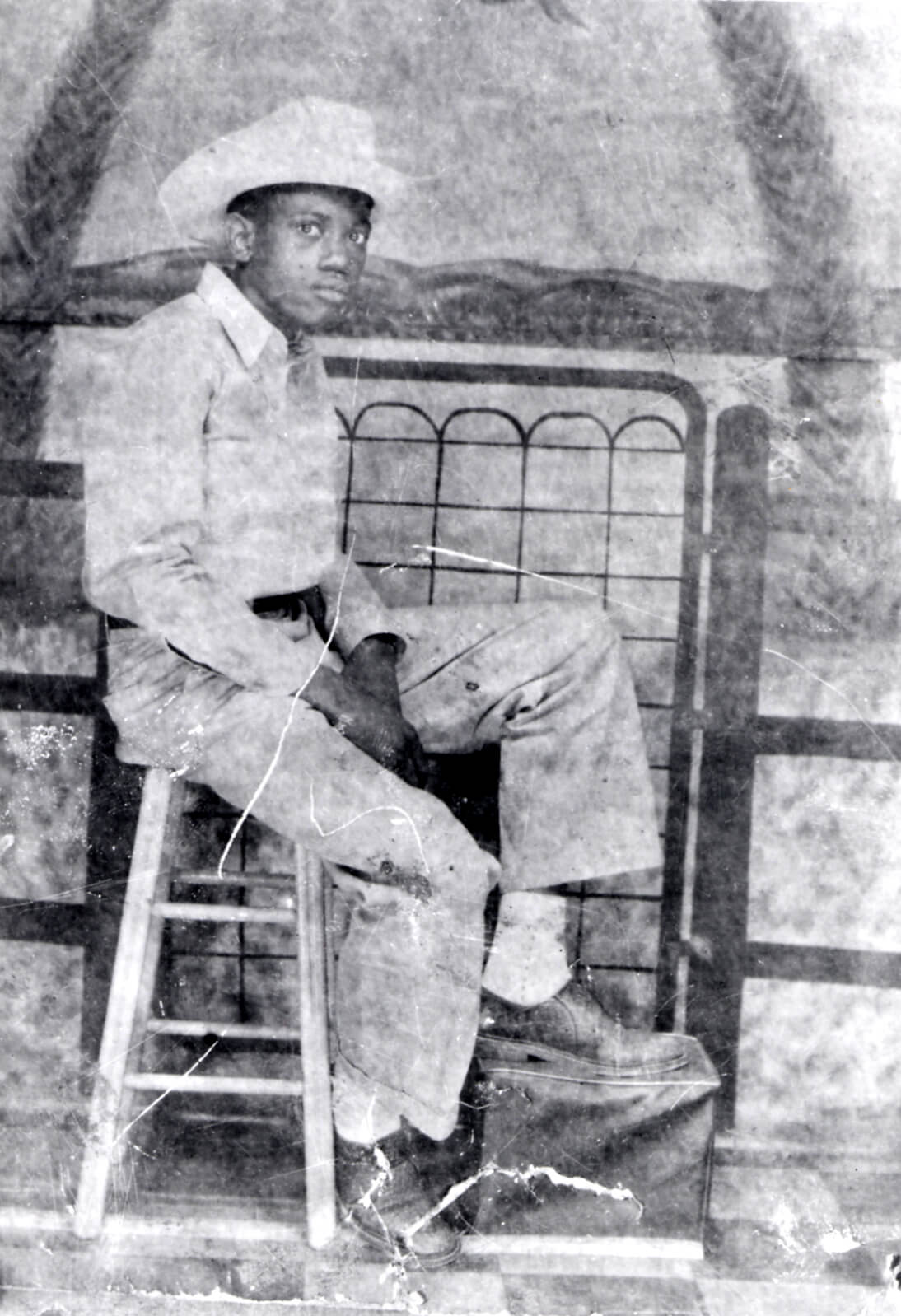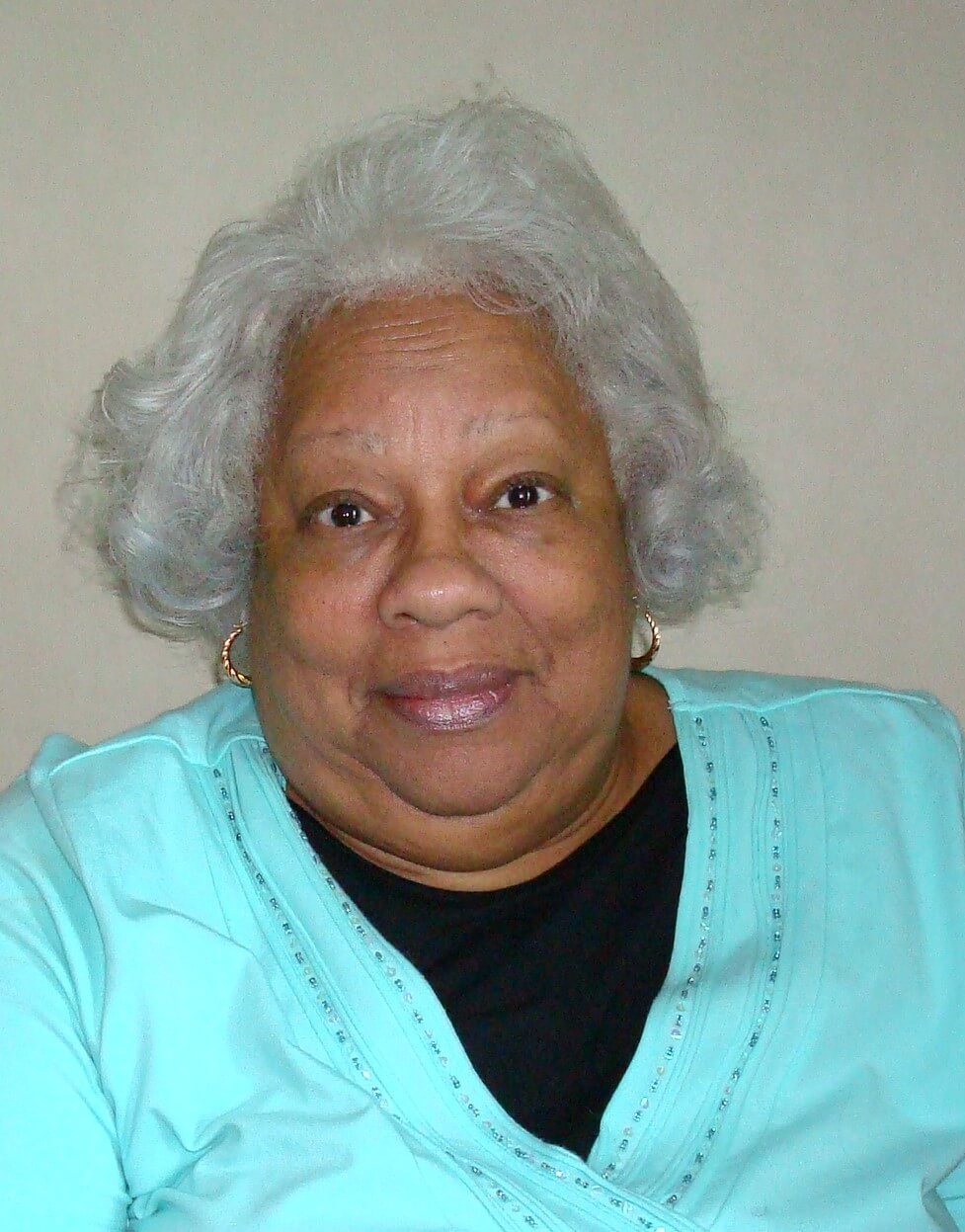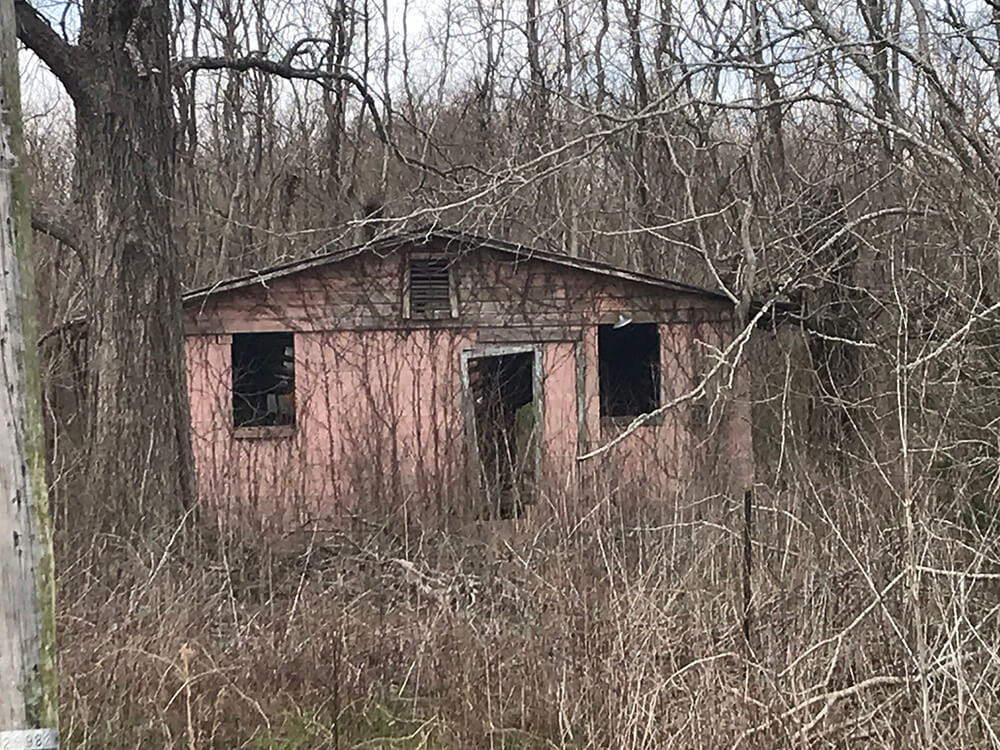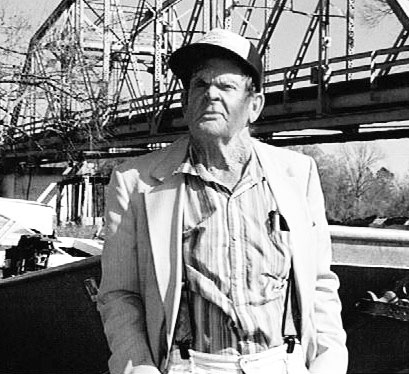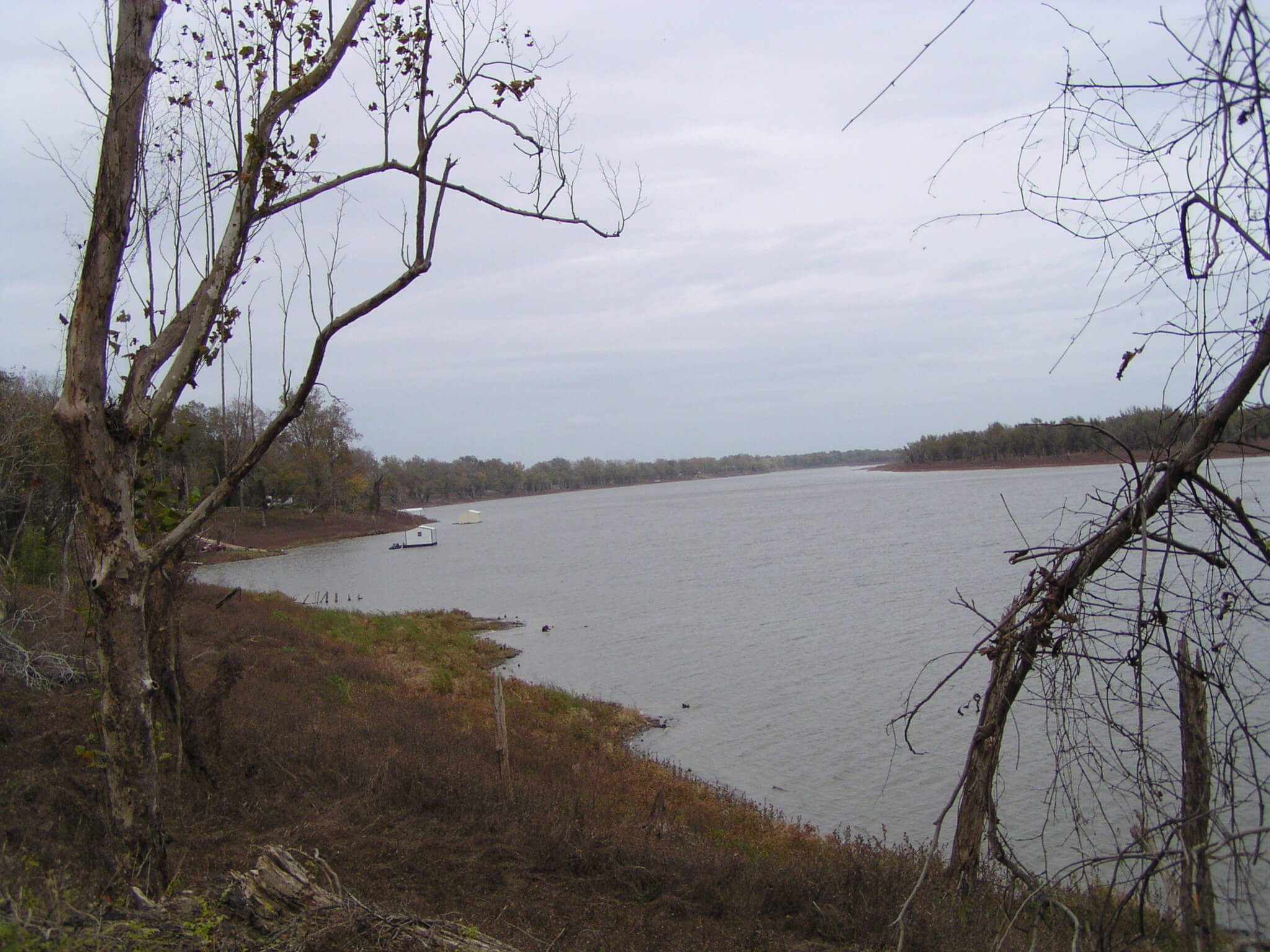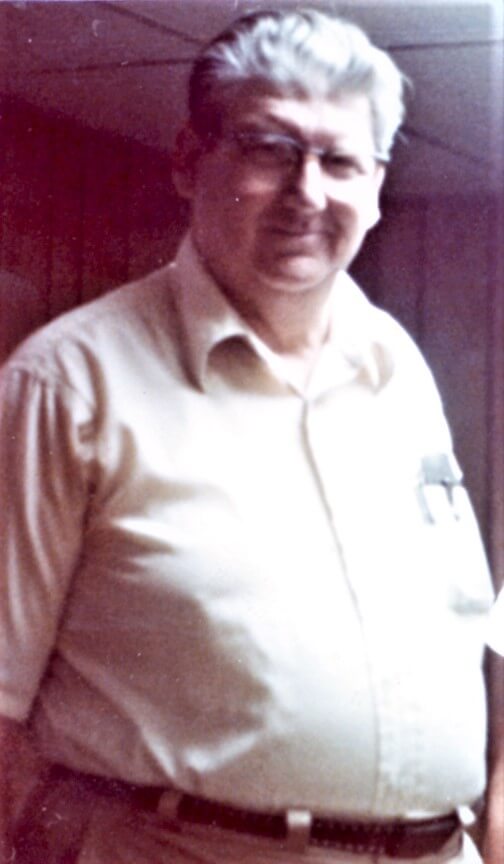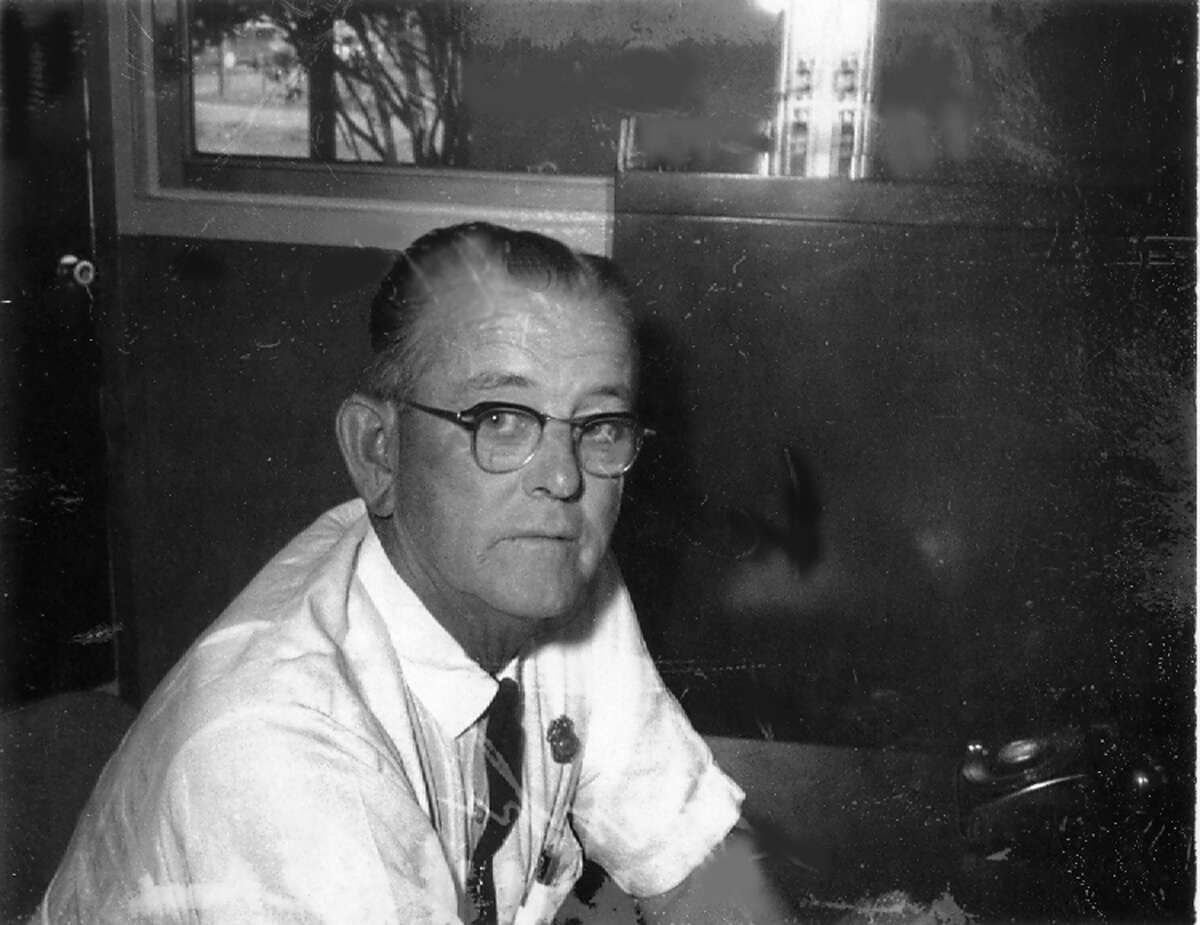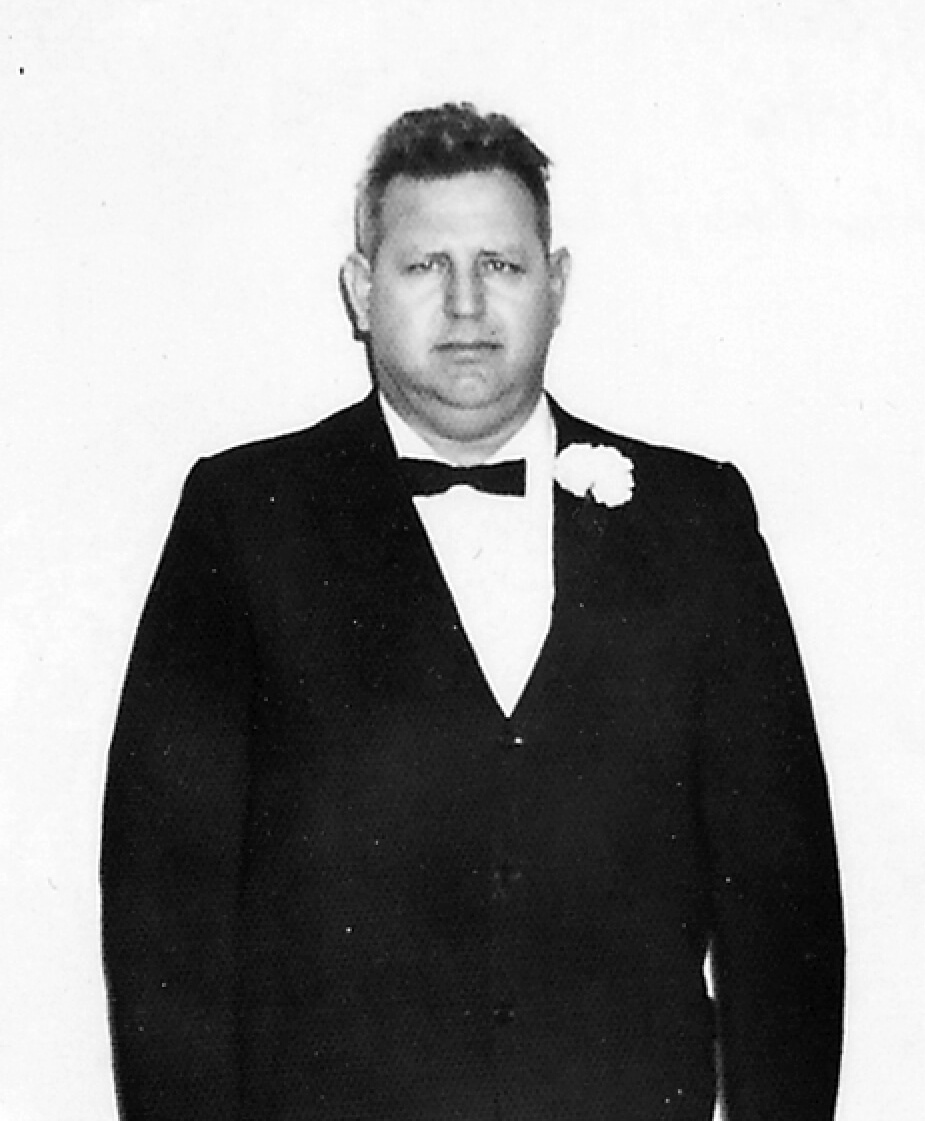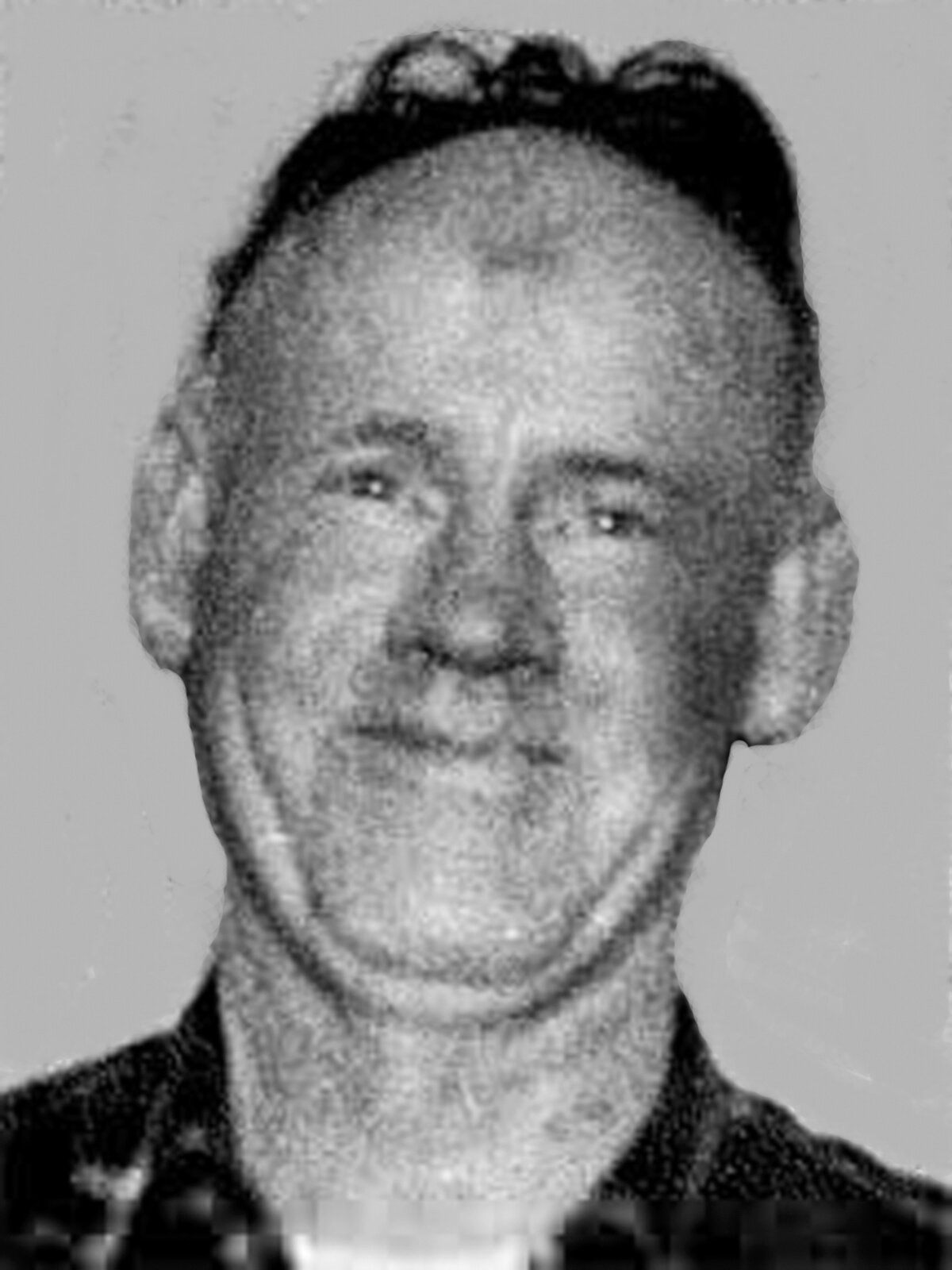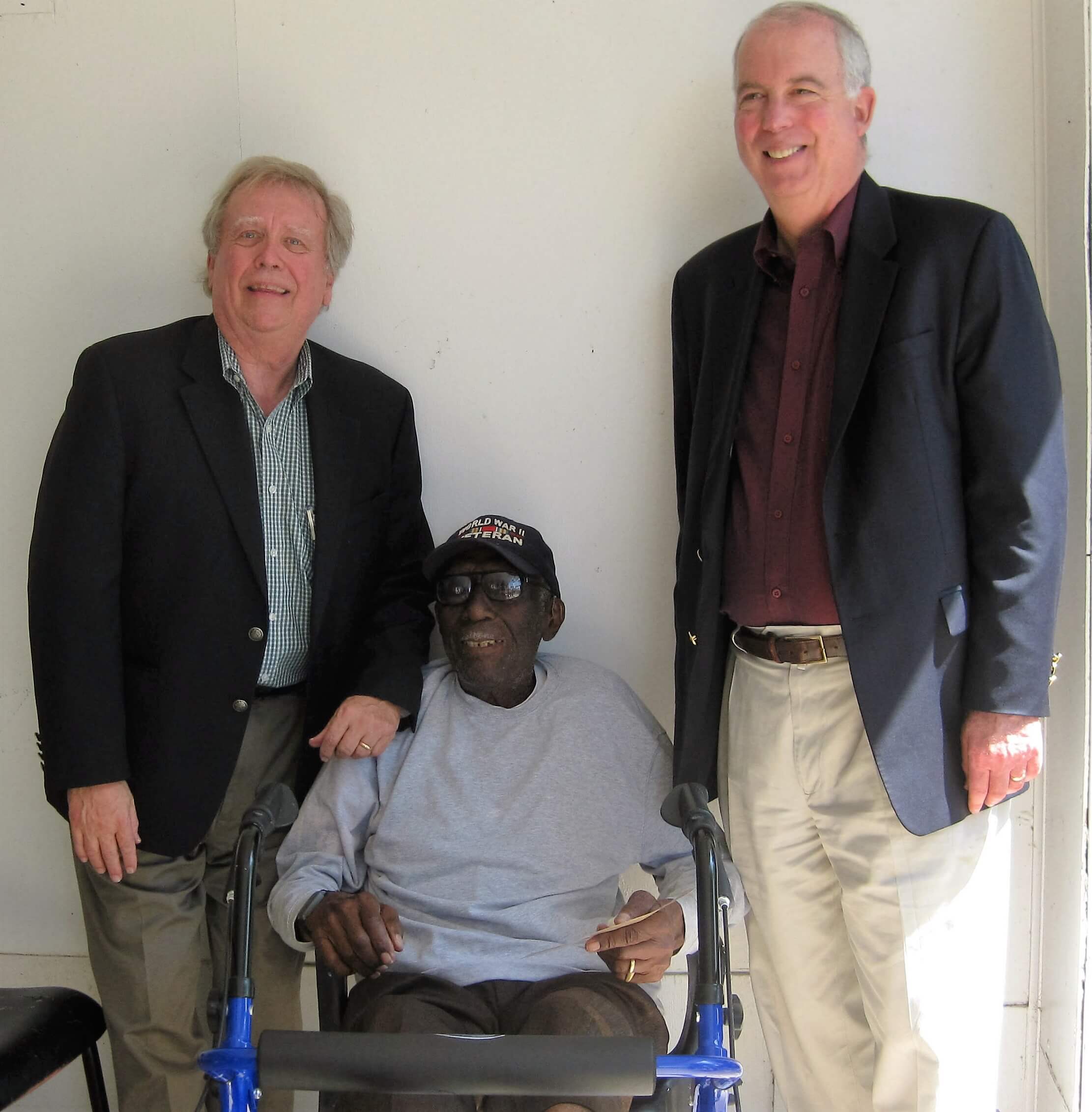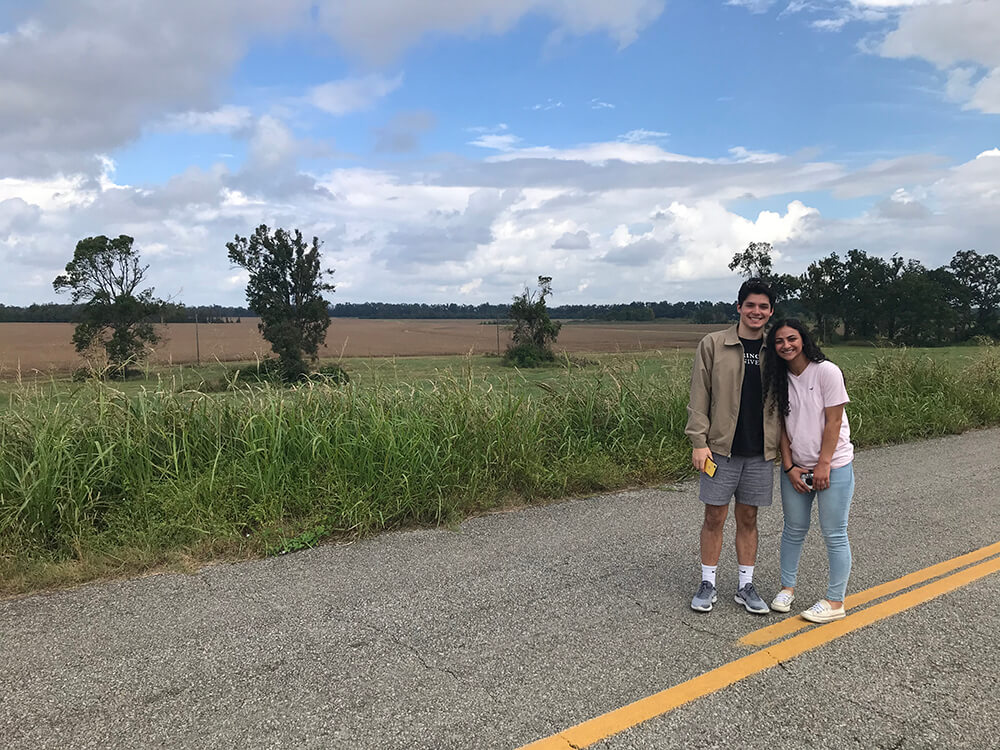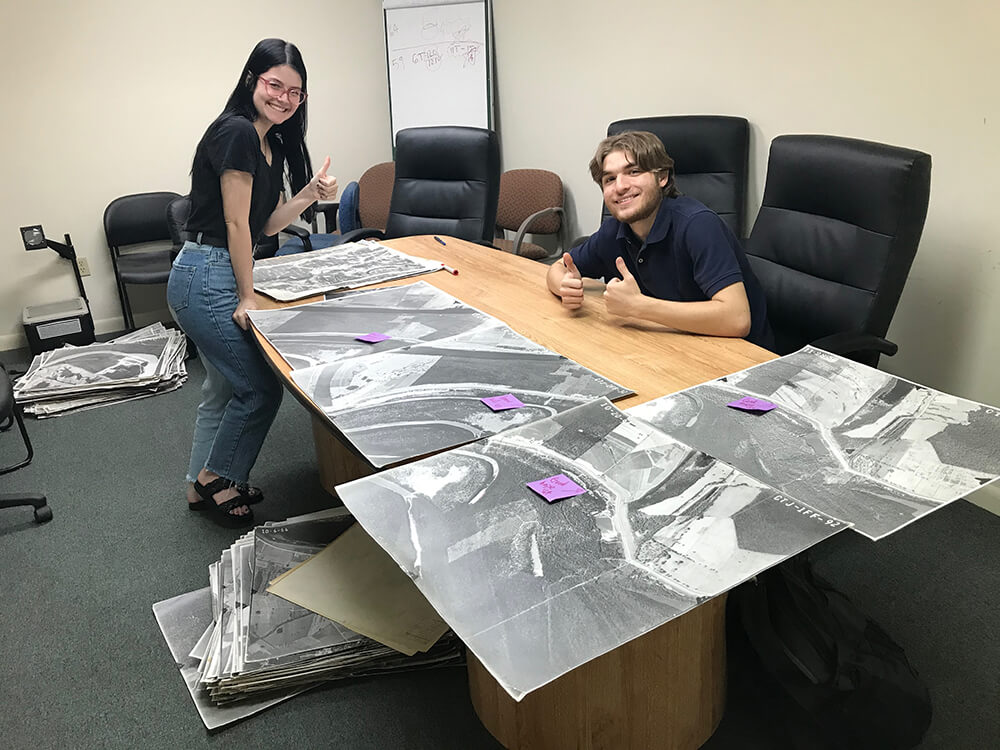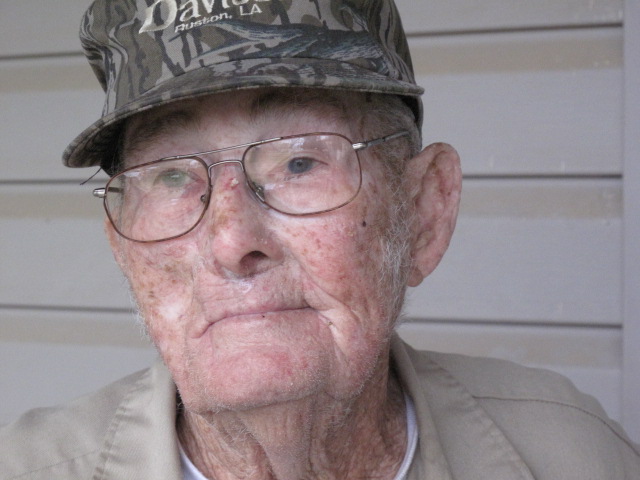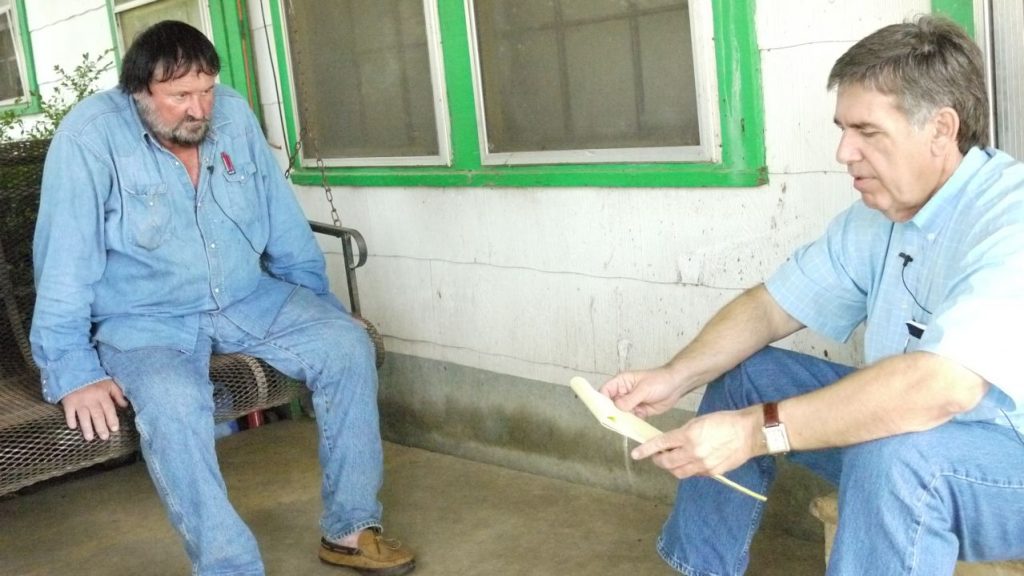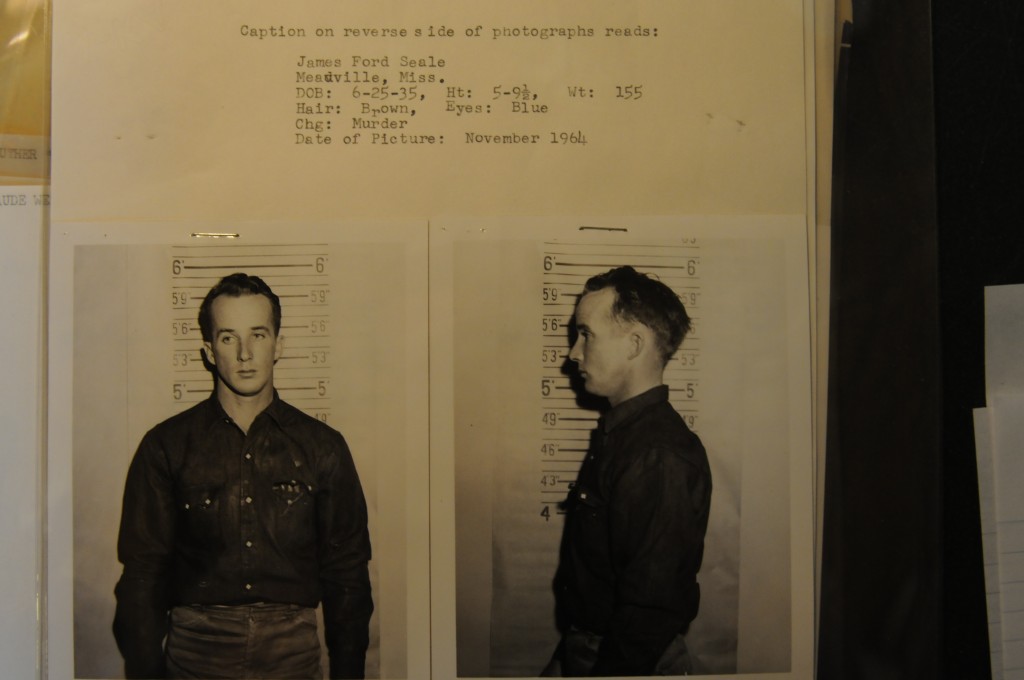Joseph Edwards disappeared in Concordia Parish in July 1964.
FBI records, a lengthy investigation by the Concordia Sentinel in Ferriday, LA, a book by LSU Cold Case Project associate director Stanley Nelson (Devils Walking), and exhaustive work by the LSU Cold Case Project have generated detailed information on the events leading up to Edwards’ disappearance.
But one big question remains: Where is the body of Joseph Edwards?
This is a mystery that the LSU Cold Case Project continues to investigate.
Born at the charity hospital in Natchez, Miss., in 1940, Joseph “Joe-Ed” Edwards was reared by his grandparents in Sibley, MS, until the family moved to Clayton in Concordia Parish, LA, in the mid-1950s. By the time he was 24, Edwards was staying with his girlfriend and other relatives and friends in Clayton. He also occasionally stayed with his mother in Natchez.
He had quit school at Sevier High in Ferriday during his teen years and held a variety of jobs before going to work at the Shamrock Motel in the spring of 1964, the same period a secret Klan cell known as the Silver Dollar Group was organized at the Shamrock coffee shop/restaurant.
Edwards held multiple menial jobs at the motel – porter, errand runner, handyman, janitor, dishwasher, room server and so on.
He was outwardly fun-loving and jovial, competitive and enjoyed gambling. He was described by friends and co-workers as a neat dresser who wore pressed clothes, a bit flashy, walked “with a swagger,” a “ladies’ man,” and a “sort of a fresh boy.”
Yet he had a girlfriend, who was considered his common law wife, in Clayton. They were parents of two children.
Edwards’ brother Clabe said Joseph Edwards was at times “a loner,” that he could be “outspoken,” and that he liked jewelry. Edwards wore a black ring with a silver stone setting on his left ring figure, but his most valued piece of jewelry was a men’s yellow gold wristwatch that had small diamonds around the watch case and at the ends of the band. He bought the watch in Natchez in 1959 and almost always had it on.
Edwards was 5-feet-6 and weighed approximately 165 pounds. He was missing at least two upper teeth on the left side of his mouth. A friend and co-worker said Edwards was self-conscious about his missing teeth and when he smiled would cover his mouth with his hand.
He was not involved in civil rights and was not registered to vote.
TROUBLING SIGNS
On July 6, 1964, six days before he went missing (and four days after passage of the Civil Rights Act of 1964), Edwards made the biggest purchase of his life – a 1958 used four-door Buick, white over light green, for $495. Friends said Edwards was excited and proud to finally own a vehicle.
Despite this big moment, the walls were closing in. Debtors were hounding him. He was behind on his payments for the wristwatch he had purchased five years earlier and a collection agency was attempting to collect the unpaid balance plus interest after the jewelry store filed suit against Edwards. Other collectors were looking for him as well.
Edwards also appeared to be troubled. A Natchez doctor treated him for anxiety and fear during 1964, something that his family didn’t know. Edwards’ sister Julia Dobbins said her brother seemed happy before he disappeared, but she often wondered whether he had a premonition of death.
At the motel, Edwards’ activities became exceptionally alarming to his friends. He could clean a room for a motel guest, but he couldn’t sleep in it because of segregation. But he had been given a pass key as part of his work. Sometimes he slept in an unoccupied room without permission. One night he used the pass key to unlock a door to a room he thought was vacant and walked in, startling a man and his wife asleep in the bed.
Klansmen and deputies heard about these incidents.
TWO ELECTRIFYING EVENTS AT THE SHAMROCK
Two explosive things happened at the Shamrock during the days before Edwards’ disappearance.
1. A white child, the son of a prostitute, drowned in the pool. Edwards was seen there at that time, and it was rumored he was making prostitution dates for the woman. Though never proven, the Klan and the cops believed this.
2. Edwards forced a kiss on the white registration clerk at the Shamrock Motel–this was the triggering event for the attack on Edwards.
EDWARDS DISAPPEARS
At 10:30 p.m. on July 11, 1964, Edwards left a bar in Ferriday after telling the Black owner he was heading to the Shamrock in Vidalia to meet a white girl around 11 p.m.
Once at the Shamrock, Edwards waited, but the white woman never showed up. Possibly a white woman had been utilized by someone to lure Edwards to the motel under the ruse of a date. But it was a set up. The cops and Klan were watching the motel and when Edwards arrived, they put into play a planned wrecking crew attack.
Edwards waited at the Shamrock for more than an hour before heading out, apparently in route to Ferriday and then home to Clayton. By the time he left Vidalia it was after midnight and a new day had begun — July 12, 1964.
When daylight arrived, Edwards’ Buick was seen parked along the levee on the shoulder of the Ferriday-Vidalia Highway (across the road from Dixie Lanes Bowling Alley). It rested near the bowling alley for approximately two weeks before it was towed to a service station.
Edwards’ mother – Bernice Conner – reported her son missing to police and the FBI. She visited local jails but could not find him.
Initially it was believed that Edwards simply left the parish of his own free will.
Rumors spread that he fled debtors.
He has not been seen since the night of his disappearance.
DELAUGHTER INDICATES INVOLVEMENT
After he went missing, the FBI, like Edwards’ mother, also visited the jails and talked to police in 1964 but could not locate him. The bureau did not open an investigation at that time.
At the sheriff’s office at the courthouse in Vidalia, deputies Bill Ogden and Frank DeLaughter were told to go check on the abandoned Buick that had been parked on the highway by the bowling alley for the past few days.
DeLaughter responded that the car belonged to the Black man at the Shamrock. You don’t have to worry about “that Black SOB” anymore, DeLaughter said, pointing out that the man would not be bothering the white girls at the Shamrock anymore.
During this time, Rev. Lee ran into Deputy Raymond Keathley at the Clayton school yard, Keathley was the deputy who told DeLaughter and Ogden to check on the Buick left parked by the bowling alley. Lee asked about Edwards. Keathley told Lee that the deputies “had gotten” Edwards, meaning they had killed him.
SEVEN SUSPECTS LISTED BY FBI
In 1967, after the FBI launched an investigation into the car bombing murder of Wharlest Jackson in Natchez, the Edwards’ case was one of a few unsolved killings made a part of the WHARBOM probe. Many of the victims were believed targeted by the Silver Dollar Group.
In the Edwards case, FBI agents interviewed more than 250 witnesses, many multiple times.
The FBI files relate that the bureau thought Edwards was the victim of an action by police or the Silver Dollar Group or both.
Agents would identify seven primary suspects, and reported that five were members of the SDG:
— Deputy Frank DeLaughter, Concordia Parish Sheriff’s Office
— Deputy Bill Ogden, Concordia Parish Sheriff’s Office
— Vidalia Police Chief J.L. “Bud” Spinks (Not SDG)
— Louisiana Probation Officer James Goss (Not SDG)
— Red Glover (SDG head), Vidalia
— Homer “Buck” Horton, Vidalia
— Kenneth Norman Head, Vidalia
RUMORS
After his disappearance, there were multiple rumors over what happened to Edwards:
— The family heard that his tongue had been cut out and that he had been placed in a nursing home.
— Some believed that Edwards had been killed and his body tossed into the Blue Hole, a deep abyss in an old bend of the Mississippi at Lake St. John.
— The FBI brought in divers to search Deer Park Lake, another old bend in the Mississippi located 14 miles below Vidalia between the main river channel and the levee. A commercial fisherman claimed that in 1964 after Edwards went missing, he was trying to free a seine from an underwater obstacle when a barrel or container was upset and fleshy material broke loose and surfaced. The fisherman believed that the flesh was human, not animal. But others who also saw the flesh believed it was an animal. The FBI concluded that Edwards had not been put into Deer Park Lake.
— There was a rumor that Edwards’ body was tossed into a hog pen and eaten by hogs, but there is nothing to substantiate this story.
— One rumor was that Edwards was held in Mississippi until news of his disappearance died down and then he was killed.
— Another rumor was that Edwards had been taken to a farmhouse, tortured and then skinned alive.
THE CLERK AND HER BOYFRIEND
James Goss was the boyfriend of Iona Perry, a registration clerk at the Shamrock. Goss was a Louisiana probation officer, twice Iona’s age, married and the father of two children. Iona did not know he was married when they began dating in the spring of 1964.
Because of his job, Goss, who was not from the area, introduced himself and stayed in contact with the police – including Ogden and DeLaughter – but only later did he learn of the deputies’ violent reputations in the parish.
Once a week, Goss came to Concordia Parish to work on his probation cases. He stayed at the Shamrock.
One night he arrived in early summer of 1964 and found his girlfriend Iona behind the counter in the registration office. Iona, described as a pretty girl, suffered from polio, and needed crutches to walk. She began to cry. Joseph Edwards, she said, had flirted with her and attempted to kiss her on the lips before she turned her head away. The kiss landed on her cheek
She was angry at Edwards, told him to leave her alone and to never do that again. He apologized and begged her not to tell anyone, fearing he would be in big trouble.
DEPUTY BILL OGDEN
A day after learning of the forced kiss, James Goss decided to tell police what Edwards had allegedly done to Iona.
Deputy Bill Ogden had been on the scene when the child drowned at the Shamrock pool. There, he saw Joseph Edwards for the first time.
A short time later, Ogden and other deputies were on the courthouse grounds when James Goss approached Vidalia Police Chief J.L “Bud” Spinks with news that he wanted Joseph Edwards charged with assaulting Iona Perry. Spinks told Goss he would investigate it but the victim would have to file the complaint.
Ogden was listening when Goss told Spinks about the kiss.
Spinks and a Natchez policeman visited Iona at a boarding house in Natchez where she lived. Spinks told her that Goss had reported to him what Edwards had done. He asked Iona if she would file a complaint against Edwards. He urged her to do so.
She refused. She was angry at Goss because he had promised her that he would not tell anyone. Iona told Spinks that she didn’t want anything done, to let it go.
She said despite her pleas, Spinks indicated Edwards would be taken care of.
FBI AGENT PFEIFFER & THE GATORS
FBI Agent John Pfeiffer said a rumor floated about that Edwards had been tossed to the gators. This was fueled when the commercial fisherman found what he thought was human flesh at Deer Park Lake a few weeks after Edwards’ disappearance.
Goss heard this rumor, too, and later ran into Bill Ogden in Ferriday. He asked Ogden if he had found out what happened to the missing Joseph Edwards.
“You ought to know,” Ogden told Goss, “You’re the one that threw him to the gators.”
Goss immediately knew he was in deep trouble and that the deputies would point the finger at him as the murderer if they thought it was to their advantage, a good ploy because Goss had complained about Edwards, wanted him arrested and had initially planned to beat him up. Goss was the only person with a tangible motive to harm Edwards.
WRECKING CREW PROJECT
An informant told the FBI in 1967 that he had learned from a Louisiana Klansman that after Iona refused to file charges that Vidalia Police Chief Bud Spinks had gone to Red Glover, head of the Silver Dollar Group, and asked him to take care of Edwards. The informant said the other two men involved were Vidalia Klansmen Kenneth Norman Head and Homer “Buck” Horton, both SDG members. The informant said the three killed Edwards.
Another informant told the FBI that he heard something had happened on top of the levee in a wrecking crew project to whip Edwards. This informant said the wrecking crew over did it, that something happened to Edwards on the levee and that Edwards rolled down the levee and later was possibly buried in the levee.
WITNESS ON THE HIGHWAY
A witness leaving a bar on the Ferriday-Vidalia Highway and heading east toward Ferriday said that on the night of the disappearance he saw what appeared to be an unmarked police car – a new model Oldsmobile, white in color with a radio antenna on the trunk and flashing red light on the dash — overtake the Buick and force it to stop by the bowling alley. As the witness came abreast of the police car, parked in front of the Buick, he observed a large white male sitting in the Oldsmobile and two or three white men standing by the driver’s door of the Buick. A man with a plaid shirt was sitting in the driver’s seat of the Buick but the witness could not tell if the man was white or Black.
BILL OGDEN AT THE SCENE WHERE EDWARDS WENT MISSING
Another story emerged from the mouth of Bill Ogden. A Ferriday barber and preacher said that right after Edwards went missing that Ogden came in for a haircut. Ogden often told the preacher about his experiences as a cop.
During the visit, Ogden said he and DeLaughter had received a complaint at 11 p.m. that Edwards was causing a disturbance at an African-American nightclub in Ferriday -– Haney’s Big House — and the two immediately began searching for Edwards. However, the FBI quickly learned that Edwards had not been to the club that night.
Ogden told the preacher that when Edwards was pulled over across the street from the bowling alley that he jumped from the car and ran up the levee. Ogden chased him in his patrol car up the levee road, but Edwards got away.
Who was in what appeared to be an unmarked white police car with antennae on the back? Possibly the SDG members Glover, Head and Horton. But none of them were big men.
Who was the big man in the white car sitting in the driver’s seat? Chief Spinks was a big man – he could have been the driver. Or it could have been a Ferriday cop – Junior Harp (a big man) – and close associate of DeLaughter’s who worked closely with him. (James Goss, the registration clerk’s boyfriend, said he suspected Harp was involved.)
Who had access to a white Oldsmobile? Glover, Harp and Spinks each owned a car fitting the description by the eyewitness.
